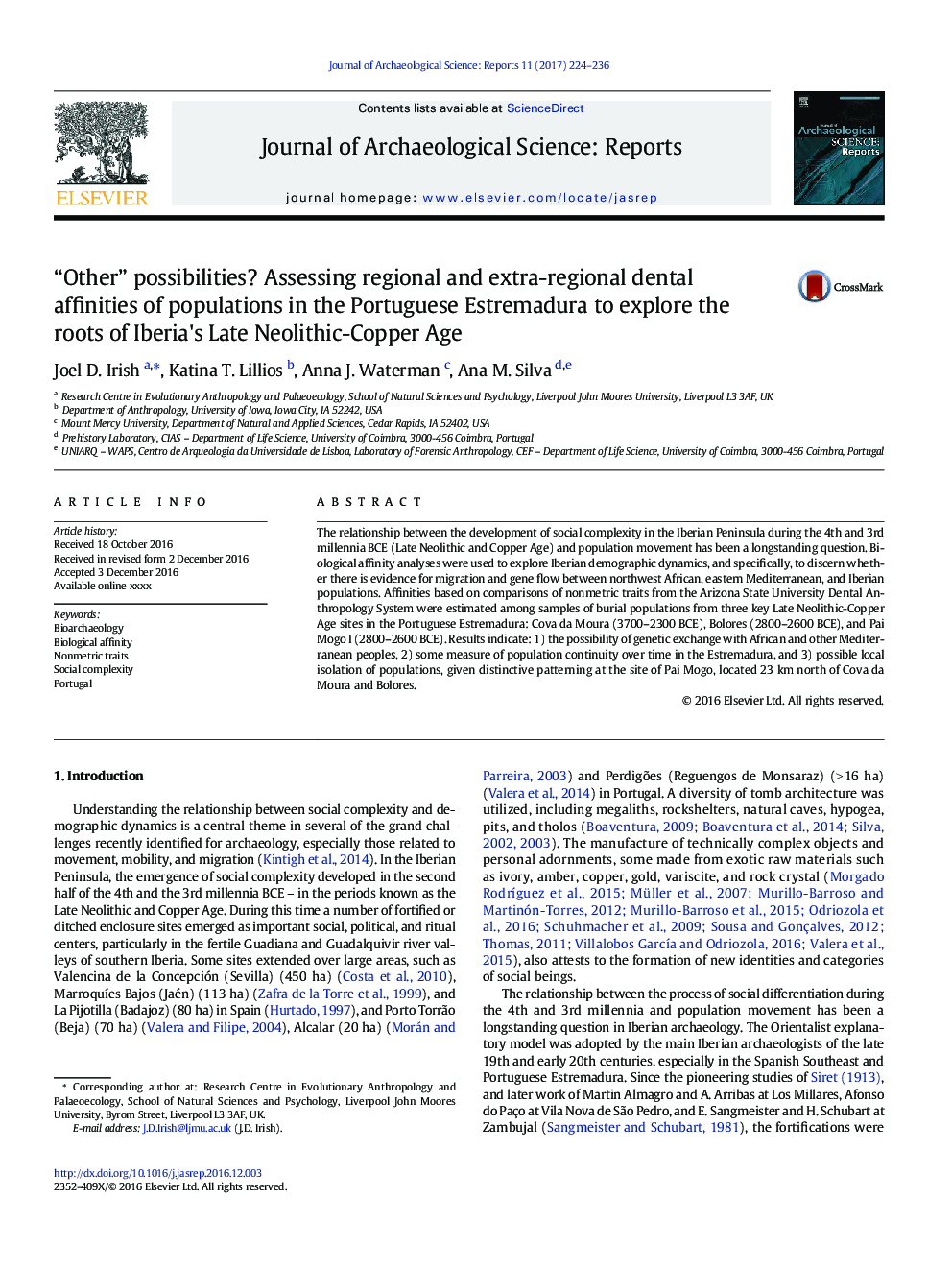| Article ID | Journal | Published Year | Pages | File Type |
|---|---|---|---|---|
| 5112561 | Journal of Archaeological Science: Reports | 2017 | 13 Pages |
Abstract
The relationship between the development of social complexity in the Iberian Peninsula during the 4th and 3rd millennia BCE (Late Neolithic and Copper Age) and population movement has been a longstanding question. Biological affinity analyses were used to explore Iberian demographic dynamics, and specifically, to discern whether there is evidence for migration and gene flow between northwest African, eastern Mediterranean, and Iberian populations. Affinities based on comparisons of nonmetric traits from the Arizona State University Dental Anthropology System were estimated among samples of burial populations from three key Late Neolithic-Copper Age sites in the Portuguese Estremadura: Cova da Moura (3700-2300Â BCE), Bolores (2800-2600Â BCE), and Pai Mogo I (2800-2600Â BCE). Results indicate: 1) the possibility of genetic exchange with African and other Mediterranean peoples, 2) some measure of population continuity over time in the Estremadura, and 3) possible local isolation of populations, given distinctive patterning at the site of Pai Mogo, located 23Â km north of Cova da Moura and Bolores.
Related Topics
Social Sciences and Humanities
Arts and Humanities
History
Authors
Joel D. Irish, Katina T. Lillios, Anna J. Waterman, Ana M. Silva,
